Although wood is installed on more residential decks than any other material, the number of man-made substitutes has expanded exponentially. The three major categories of synthetic decking are wood/plastic composites, all-plastic planks, and composites wrapped in an outer layer of plastic, called capstock or co-extruded decking. All are designed to be low-maintenance alternatives to wood that need no finish and won’t decay, split, warp, or be attacked by insects. Dozens of companies make synthetic decking, but it’s unlikely you’ll be able to find all of them where you live. Retailers are more likely to carry just a few brands, so product availability varies.
Wood/plastic composite
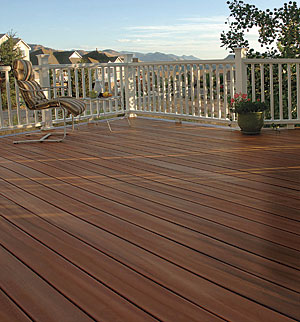
Most composites are a mix of wood flour and plastic, usually polypropylene or polyethylene. Of the two, polyethylene blends are more common. The plastic often is recycled, and it’s somewhat soft. Consequently, the planks wear more quickly and are floppy before installation.
Polypropylene is a denser and stiffer plastic, and composites made with it can span longer distances than polyethylene blends.
Composites can be cut with standard carpentry tools. In general, they are fairly heavy.
Wood/plastic blends were supposed to overcome problems associated with wood decking, but consumers discovered that composite decking still could support the growth of mold and sometimes even rot. The cellulose in the wood flour could be eaten by fungi. Each manufacturer has its own blend, so the way a plank responds to moisture depends in part on the plank’s formulation and wood-flour content. Decking with higher concentrations of wood flour is more likely to absorb water and more likely to develop problems.
To counter these problems, some manufacturers have tinkered with conventional blends. One substitutes rice hulls for wood flour in its composite, claiming that because rice hulls contain smaller amounts of digestible nutrients, the decking is more resistant to moisture, mold, stains, and insect damage. Another makes a composite from polyethylene and fly ash, a by-product of coal-fired power plants. Bamboo composites also are available.
Pros: Insect resistant; low maintenance; resists checking and splintering; some brands contain recycled content
Cons: May support mold and mildew; colors may fade
All plastic
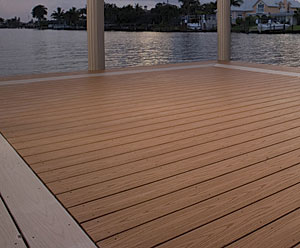
Wood-free synthetic decking is made from a variety of plastics, including polyvinyl chloride (PVC), polypropylene, polystyrene, and polyethylene. Some manufacturers use recycled plastic in their decking, but others do not. Because they contain no wood fiber, these materials don’t have the same moisture-related problems as wood and wood/plastic composites.
Wood-free plastics come in several forms, including solid and hollow-core rigid planks, and in 5/4-in. and 2-in. thicknesses. With lengths of up to 20 ft., seams and waste can be kept to a minimum.
Different types of plastic have different properties. High-density polyethylene, for instance, is relatively flexible, so 5/4-in. planks may require joists 12 in. on center. Some 2x PVC planks, however, can span 24 in.
A number of companies now make decking from cellular PVC, which is a solid, foam-like material full of tiny air bubbles. The manufacturing process gives the material roughly the same weight and feel as softwood, such as pine. It works easily with conventional tools and has low water absorption
and good stain resistance.
Wood-free plastics don’t require any maintenance beyond periodic cleaning, and they weigh less than wood/plastic composites. On the downside, some planks have the unmistakable look of plastic. Beauty, however, is in the eye of the beholder.
Pros: Low maintenance; fade and scratch resistant; lighter in weight than composites; splinter-free
Cons: More expensive than composites; some look like plastic
Capstock
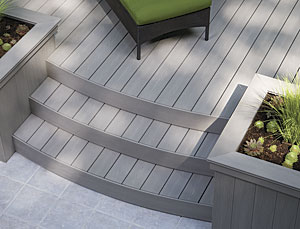
The latest innovation by manufacturers is to cover their composite or PVC boards with a thin layer of hard, tough plastic. These planks are called capstock.
Coatings vary by manufacturer (their exact ingredients are closely guarded secrets), but in general, they are designed to offer more stain, fade, and scratch resistance than conventional composites, and certainly a whole lot more protection than natural wood. Whatever it’s made from, the outer layer of plastic isn’t cheap. Capstock decking is the most expensive synthetic-decking option on the market.
In addition to requiring little maintenance—washing with soap and water removes dirt—the planks have realistic grain patterns and colors that look more like real wood than earlier synthetics. They also come with long warranties that may even be transferable if you sell your house.
A potential problem with capstock decking is the uneven absorption of water at the cut ends. Because the core of a capstock plank is more porous than the outer shell, it absorbs more water, causing it to swell. Once the plank swells, it will never return to its original size. Therefore, sealing the cut ends of each capstock board is a must.
Pros: Realistic grain patterns; low maintenance; stain and scratch resistant; long warranties
Cons: Expensive; prone to swelling at cut ends
Fine Homebuilding Recommended Products
Fine Homebuilding receives a commission for items purchased through links on this site, including Amazon Associates and other affiliate advertising programs.

4-Gallon Piston Backpack Sprayer
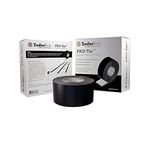
Flashing and Joist Tape
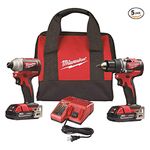
Drill Driver/Impact Driver
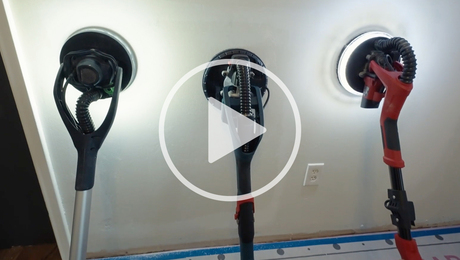

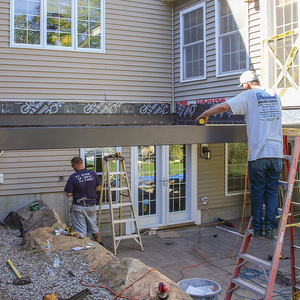










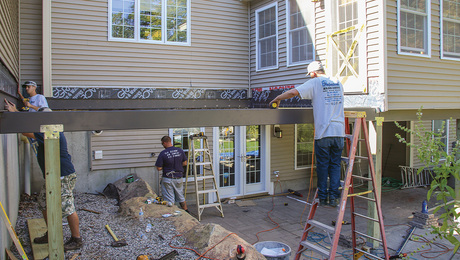
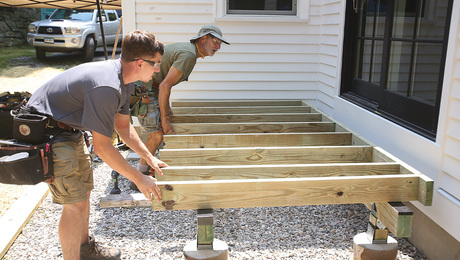











View Comments
In addition to the problems with capstock decking mentioned in the article, consider that installing capstock with surface screws provides an avenue for water to reach the wood filler inside the board, so hidden fastening is preferred, which adds considerably to the cost of the deck. Second, and most important, there is no wear data. We don't know how well the plastic caps wear over time. We do know that they are very thin, averaging 1/16th of an inch thick (about 1/2 the thickness of vinyl floor tile) and made of very soft plastics (PVC, Polyethylene and Polypropylene) that not wear well, so expect a rather quick wear through -- probably between 10 and 15 years.